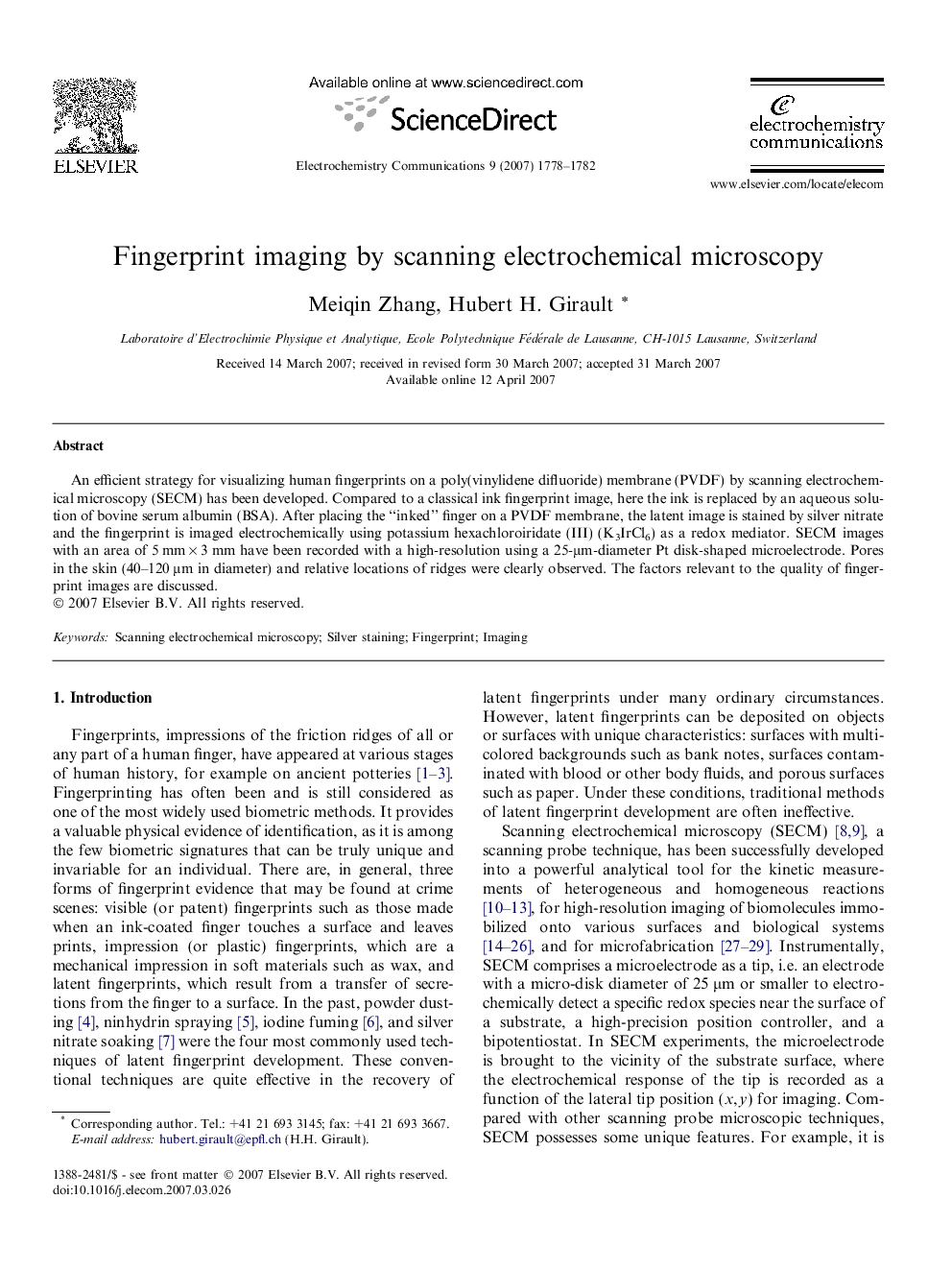| Article ID | Journal | Published Year | Pages | File Type |
|---|---|---|---|---|
| 182257 | Electrochemistry Communications | 2007 | 5 Pages |
An efficient strategy for visualizing human fingerprints on a poly(vinylidene difluoride) membrane (PVDF) by scanning electrochemical microscopy (SECM) has been developed. Compared to a classical ink fingerprint image, here the ink is replaced by an aqueous solution of bovine serum albumin (BSA). After placing the “inked” finger on a PVDF membrane, the latent image is stained by silver nitrate and the fingerprint is imaged electrochemically using potassium hexachloroiridate (III) (K3IrCl6) as a redox mediator. SECM images with an area of 5 mm × 3 mm have been recorded with a high-resolution using a 25-μm-diameter Pt disk-shaped microelectrode. Pores in the skin (40–120 μm in diameter) and relative locations of ridges were clearly observed. The factors relevant to the quality of fingerprint images are discussed.
